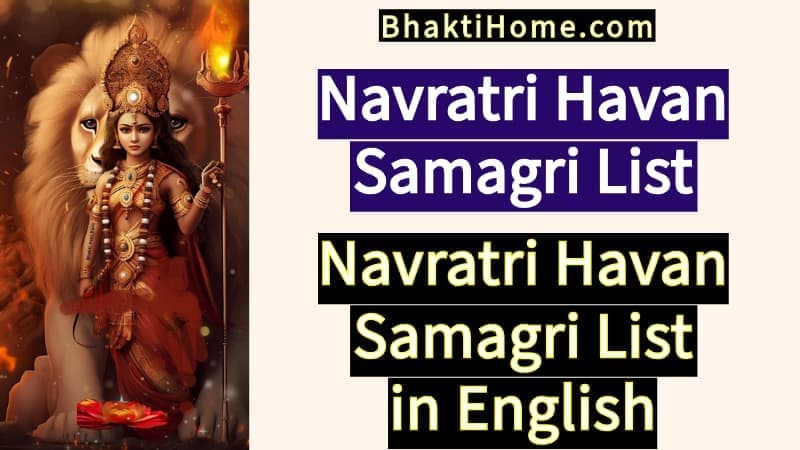
Navratri havan samagri list | Havan samagri list in english - The Navratri Havan Samagri is a collection of sacred materials used in the havan (fire ritual) performed during the Navratri festival. These items, such as havan samagri (herbal mix), ghee, wood, camphor, and specific offerings like rice, flowers, and fruits, are essential for invoking the blessings of Goddess Durga.
Havan samagri list in english | Navratri havan samagri list
Each component holds spiritual significance, symbolizing purity, prosperity, and protection.
The samagri is offered into the holy fire along with mantras to purify the surroundings, remove obstacles, and invite divine grace and blessings into the devotees' lives.
Here is a detailed list of Navratri Havan Samagri (materials needed for the Navratri Havan ritual):
1. Havan Kund (Fire Pit)
- A copper or iron container for performing the havan.
2. Havan Samagri
- A mixture of sacred herbs, seeds, and other items used for offerings into the fire. Common ingredients include:
- Navgrah Samagri: A mixture for the nine planets.
- Til (Sesame Seeds)
- Jaiphal (Nutmeg)
- Chandan (Sandalwood Powder)
- Kesar (Saffron)
- Guggal (Guggul Resin)
- Cloves and Cardamom
- Dhoop (Incense)
3. Ghee (Clarified Butter)
- Pure ghee is used for offerings (called "Aahuti") to the fire, representing purity and prosperity.
4. Cotton Wicks
- Used for lighting the fire in the havan kund.
5. Camphor (Kapoor)
- Camphor is used to ignite the havan fire and for purification.
6. Cow Dung Cakes (Gobar Ke Uple)
- Used as a natural fuel to sustain the fire.
7. Dry Wood (Sandalwood or Mango Wood)
- Mango or sandalwood is often used as sacred firewood in havan.
8. Akshat (Unbroken Rice Grains)
- Unbroken rice is offered to the fire as a symbol of fertility and prosperity.
9. Kalash (Water Pot)
- A copper or brass pot filled with water and topped with mango leaves and a coconut, symbolizing auspiciousness and purification.
10. Flowers and Garlands
- Fresh flowers, particularly red and yellow, are offered to the fire as symbols of devotion.
11. Roli (Red Kumkum)
- Used for tilak during the ritual, symbolizing energy and divine blessings.
12. Haldi (Turmeric Powder)
- Offered during the havan, symbolizing purity and protection from negativity.
13. Paan (Betel Leaves) and Supari (Betel Nut)
- Paan leaves and supari are offered to the fire for blessings and good fortune.
14. Fruits
- Fresh fruits like bananas, apples, and coconuts are offered to the fire.
15. Sweets (Mithai)
- Sweets, particularly Laddus, are used as offerings to the deity during the havan and later distributed as prasad.
16. Cloves and Cardamom
- Small pieces of cloves and cardamom are used for offerings, symbolizing purity and fragrance.
17. Panchmeva (Five Dry Fruits)
- A mix of five dry fruits like cashews, almonds, raisins, dates, and figs.
18. Panchamrit
- A sacred mixture of milk, honey, curd, sugar, and ghee used for purification rituals.
19. Red Cloth
- A small piece of red cloth is often offered as part of the ritual, symbolizing the Goddess’s divine power.
20. Incense Sticks (Agarbatti) and Dhoop
- Used during the ritual for creating a fragrant and sacred atmosphere.
21. Durva Grass
- Fresh green grass used in the offerings to the deity and the fire.
22. Janeu (Sacred Thread)
- A sacred thread used in the ritual, especially during the Sankalpa (oath-taking) process.
23. Aasanas (Seating Mats)
- For seating during the ritual, mats made from cotton, wool, or kusa grass are used.
This list of havan samagri ensures the ritual is performed in accordance with traditional Hindu practices, inviting prosperity, peace, and protection through the blessings of the Goddess during Navratri.

